I cannot recommend Gushing Over Magical Girls, but the story has its merits and has more going for it than it appears on the surface. The story plays with the magical girl genre in uncomfortable ways. Enter Utena Hiiragi, a shy middle-schooler who admires magical girls. In the story’s world, magical girls appear on television and are a reality. One day, Utena (a reference to Revolutionary Girl Utena) is coerced into becoming a villain who must fight against her favorite, local magical trio–Tres Magia. At first, Utena doesn’t want to hurt her idols, but she discovers deep inside herself a perversity to her love for her idols. Utena gains the power to make monsters using her crop, setting up the story’s monster-of-the-week format. Tentacles and vines are put to, well, uses you can guess. To put it simply: Utena is a closet sadomasochist. She discovers her enjoyment for inflicting pain and shame and dominating others. Gushing Over Magical Girls crosses into hentai tropes, stomps on consent, and explores Utena and crew’s sexual lesbian awakenings. Not all of them are into sadomasochism as Utena and the magical girl Sayo are. Utena and Sayo are set up as a dom-sub couple.
During a scene about halfway through the story, Utena almost breaks Sayo’s will. Sayo was unable to understand how to receive Utena’s expression of affection. She doesn’t, at first, see Utena’s actions as affection; she sees them as what a villain does. But during the scene, Sayo starts to see Utena’s actions as the expression of affection they are, and Sayo realizes her own enjoyment and arousal toward being dominated. Sayo’s reaction as she newly understands her enjoyment as a submissive disgusts Utena (Sayo begs for more), who loves magical girls because of their unbreakable strength of will. Utena’s rejection leads to Sayo discovering new heights of magical girl power. Both come to understand themselves better from the encounter and learn to accept their sexuality. This acceptance of oneself appears in most of the characters’ arcs in some way. Utena comes to accept her enjoyment for dominating. Sayo accepts her enjoyment for receiving pain, verbal abuse, and domination. If you are a Konosuba fan, think Darkness but not as overt. Utena’s fellow villains, Matama and Nemo, learn to accept their long-held feelings for each other. In that scene, Utena shrinks and traps them in a miniature dollhouse (provided by Utena’s subordinate Korisu, an elementary-age girl). While Utena watches on, Matama and Nemo consummate their unspoken feelings for each other. The typical tropes about the power of love and friendship are on full display along with, well, the characters on full display. The word gushing in the title is a double entente. The visuals, uh, straddle the line between ecchi and hentai.
The villain group Utena is forced into, Enormita, serves the whims of a black mascot character called Venalita who gives girls the power to become “evil” magical girls. Utena finds herself leading her own small group of villains consisting of Kiwi, who has a crush on Utena, Korisu, Nemo, and Matama. They fight against both the Tres Magia and the established arm of Enormita under the rule of Lord Enorme. Lord Enorme wants to rule the world. Utena, under her codename Magia Baiser, just wants to have her fun with the Tres Magia. Venalita and the Tres Magia’s mascot Vatz remain mysterious by the end of the first season. Their purpose and motives remain unknown.
To say Gushing Over Magical Girls made me uncomfortable is an understatement. It took me several attempts to get through it. But why would I subject myself to such? Well, everyone should expose themselves to ideas and works of art which pushes them out of their comfort area. The characters are framed as older middle schoolers, based on their school uniforms. Although, they are portrayed as older than that by their body proportions and behavior. The story reminds you of their school age periodically, which serves the double purpose of reminding the viewer of their discomfort or of their questionable sexual attraction toward the characters. The story, thankfully, doesn’t sexualize Korisu who innocently play using her villain power–the ability to empower and control toys or turn people into toys. Her power does create uncomfortable situations for the other characters, however, which touch on fetishes which float around the Internet, such as baby-roleplay. But Korizu herself does this as innocent play.
All of the sexual kinks dealing with characters who are framed as middle schoolers calls to mind Japan’s historically low age of consent. The characters are framed as likely 14-year olds. I write framed because the characters are written and designed as older than that. In 2023, Japan raised the age of consent to 16 with exceptions for couples between 13 to 15 years old; partners also cannot be five years older. In other words, Utena and all the girls are legal to explore their kinks with each other. Although, the story likes to frame “no” as “yes,” especially when it comes to Sayo’s denials. I can’t pin down if the the purpose of this age framing is to double down on the taboo that surrounds kink culture or if it’s meant to be a mirror held up to the male-targeted audience or perhaps both. It might just be because magical girl anime usually feature characters around this age.
Men are conspicuously absent from this yuri. You don’t see men in any background shots or even tending the shops. Why? Well, Gushing Over Magical Girls is a seinen. All the men are viewers, and the absence adds a voyeuristic element to the girls’ antics while doubling down on the yuri elements. The story shows how women have a sexual nature in the absence of male characters. Many stories relate female sexuality to male, but if you remove male characters, the audience becomes the contrast.
Gushing Over Magical Girls illustrates the value of allowing art to explore uncomfortable topics. The story shows the confusion and inner conflict awakening sexuality brings teens. You can think of Gushing Over Magical Girls as an overtly sexual, yuri-version of FLCL. They both explore similar themes with Utena and Sayo serving similar thematic roles as Haruko and Naota. Both aim at a seinen audience, who knows that the confusion started by puberty doesn’t abate as you age, especially if you fail to admit the parts of yourself which you feel are distasteful or wrong. The story isn’t very deep despite what I’ve discussed so far. Gushing Over Magical Girls remains a trashy story, and it knows it. But its value comes from the discomfort it can cause along with normalizing kinks and relationship types which are deemed taboo or fringe. It shows how such tendencies can be an expression of affection. The story isn’t good with the consenting part of that expression, however.
The question of censorship arises, considering the framed age of the characters and the graphic nature of the content. Many would consider Gushing Over Magical Girls too extreme to exist. Many would call it sinful. I aim at neutrality, and I am no stranger to discomfort when it comes to stories and content. A librarian must set aside their personal squirmies and be neutral. Taboo topics need to be allowed in art. After all, who defines taboo? Depictions of sex outside of marriage was once taboo. Depictions of violence used to be taboo. Greed used to be taboo. Violence and fornication are now commonplace in art and narratives. Sex outside of marriage is considered by most as a natural, required part of dating. Greed is celebrated. In many ways, modesty and contentment are now cultural taboos. Art and stories provide the means of exploring these shifting dynamics. Censoring something because it doesn’t mesh with the current zeitgeist prevents commentary about that zeitgeist. Censorship also tends to fall across sexuality more often than violence, at least in American contexts. Other cultures tend to censor violence more. What a society censors reveals what a culture finds troubling or deems its citizens unable to handle.
The age of the characters in Gushing Over Magical Girls becomes fairly easy to ignore. Indeed, if you don’t recognize a middle-school uniform style, you would think the girls are high schoolers. Of course, this is a problem in many ways itself, but they would be of the Japanese age of limited consent and around the age of consent in most cultures. The sexuality of the story aims right at American censorship habits. I can’t say if this is intentional or not. After all, Gushing is a Japanese story originally aimed at a Japanese audience. However, increasingly Japanese publishers have been keeping the Western market in mind. It is, after all, a larger market on the whole.
I don’t typically read or watch stories in the magical girl genre. What I have seen has been enjoyable like Puella Magi Madoka Magica, which I consider revisiting. Gushing Over Magical Girls plays with the few tropes I am familiar with. It doesn’t deconstruct the genre as much as tickles her feet and underarms. There’s fun character dynamics and the ridiculousness of the battles channels Super Sentai‘s over-the-top nature. Utena’s expressions are well-animated and rank alongside Anna from Makeine. Fans of ecchi’s far borderline will likely find the sexual antics tame. And the antics are shown as harmless and even enjoyed by the Tres Magia girls despite their protests. But this isn’t a story for the typical anime fan nor for the typical fan of the magical girl genre. Gushing Over Magical Girls has heart underneath the nonsense, and it has a place within the genre. It enriches the genre with what it brings to it. And it shouldn’t be censored. But as I wrote at the outset, I can’t recommend this story.
References
Borpujari, Priyanka (2023) After 116 Years, Japan Raised Age of Consent for Sex to 16. What Took So Long? The Diplomat. https://thediplomat.com/2023/07/after-116-years-japan-raised-age-of-consent-for-sex-to-16-what-took-so-long/
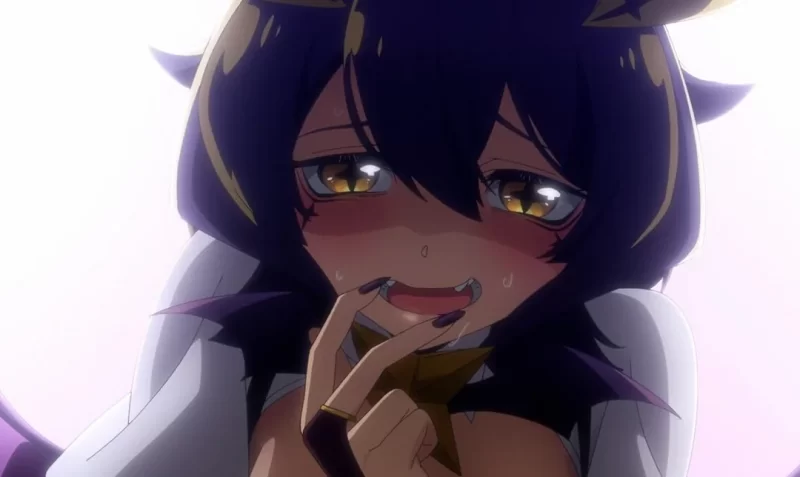
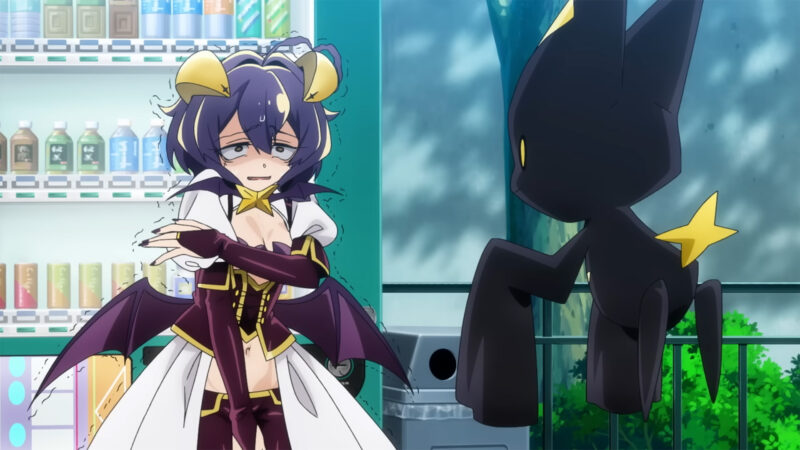
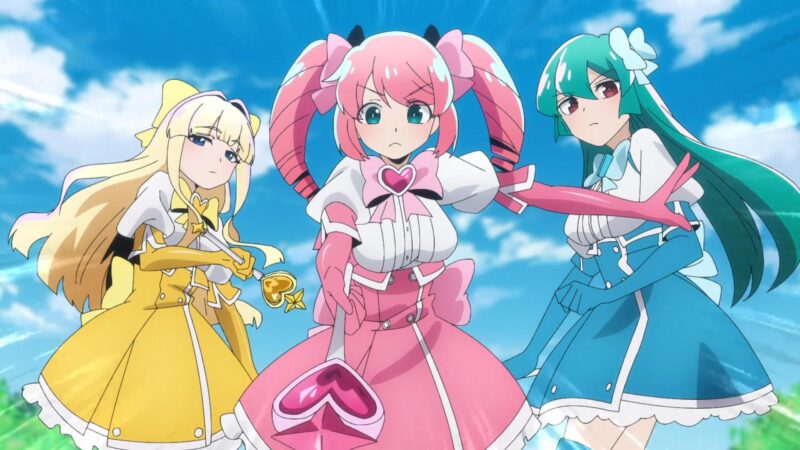
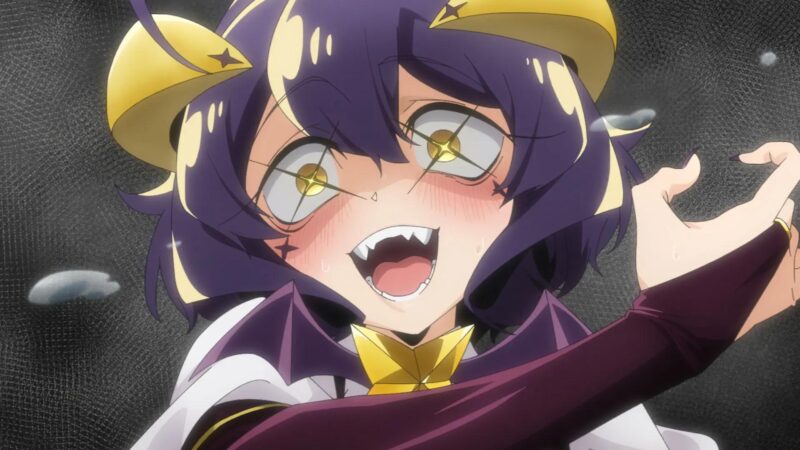
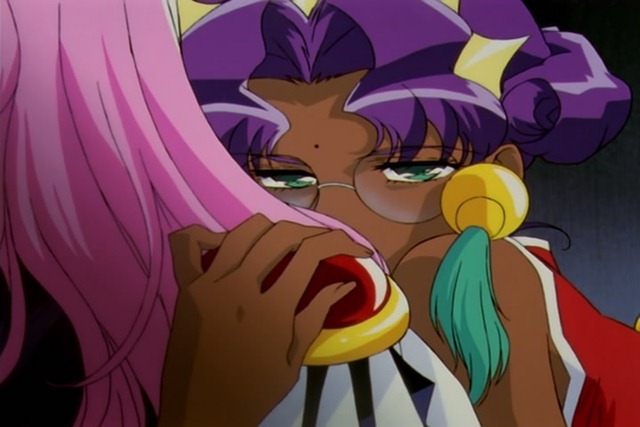
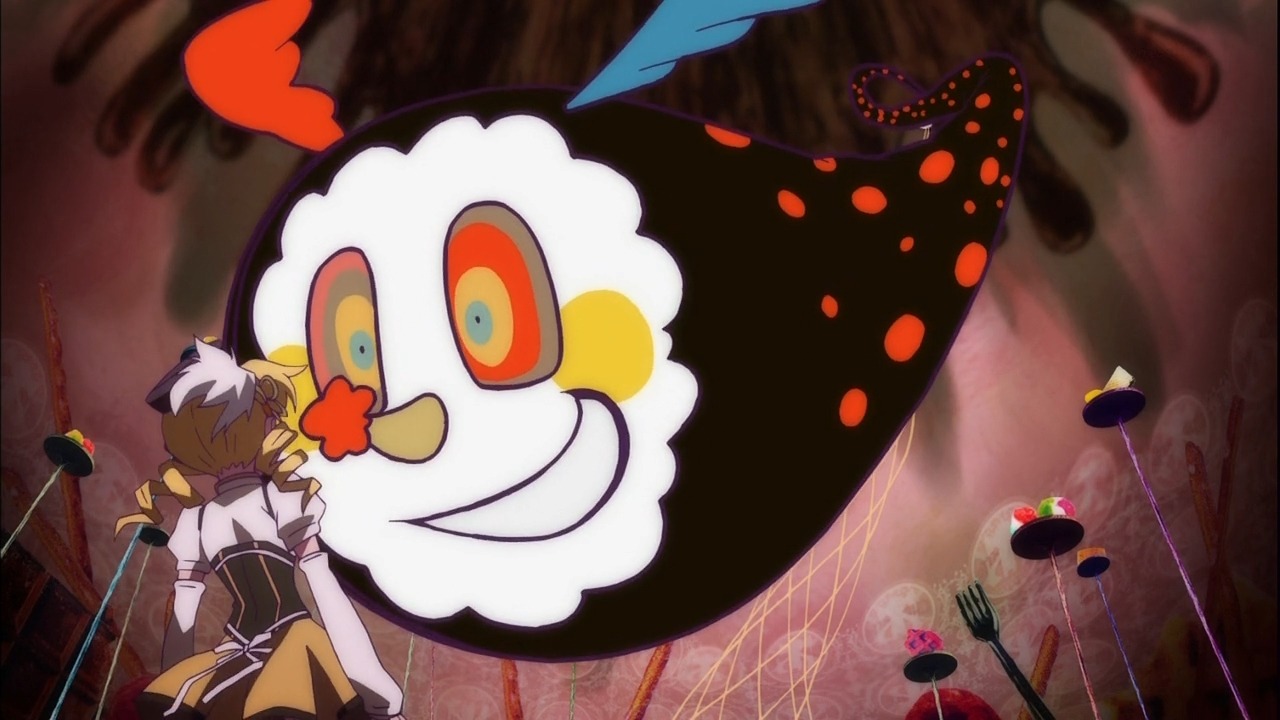

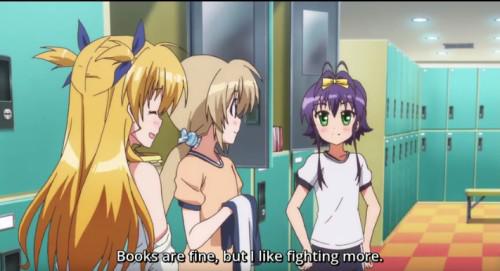
I read the original Gushing Over Magical Girls manga back when it was available to read for free on J-Novel Club for members. I was aware of the kind of content it had and I was nervous as to whether I could handle it since my threshold when it comes to sexual content is not great or at least when compared to the people I am acquainted with or friends who enjoy sexual content more than I do. Yet the reason I decided to give it a read was because a part of me was curious, bad since it was free I thought it would be a good chance to give it a try. If the content became too much for me to handle then I would drop it. I read 30 chapters/6 volumes and surprisingly I was able to handle the content just fine. Like you said by ecchi standards this is tame. With that said however I do agree that this is not a series I would recommend as there are people who would be more sensitive to the content this series has.
Speaking of concerning whether the anime adaptation is aiming for American censorship habits, I think the odds of that being intentional are slim for the reason you mention of this being a Japanese story aimed at Japanese audiences as well as being more of a coincidence given American society being sensitive to sexual content. I would add that Gunshing Over Magical Girls looks to be one of those series that is aim for a specific audience (in this case otaku that enjoy ecchi content) instead of being a anime for general audiences.
Concerning the matter of censorship I agree, but in my case I value freedom of speech and expression; especially as someone who is interested in writing stories. I also find that many times when people want something censored it is usually more for personal reasons (this makes me feel uncomfortable) that seems to be subconscious than a means of protecting others as they claim.
On another note I was not aware the protagonist of Gushing Over Magical Girls was named after the protagonist of Revolutionary Girl Utena. That is neat. Also I ship Utena and Sayo. I was thinking of a scenario in which the two could explore their own sexual links with each other as they form a close relationship. Oh, and I was not aware there are no background make characters until you brought it up.
This was a nice read and it was nice that you try to be as neutral on this as possible. You really take exposing yourself to media you are not comfortable with seriously.
By the way out of curiosity, where is greed being celebrated in society? From what I have observed, greed is still looked down upon. In fact there is this growing sentiment of people viewing capitalism in a negative light because of how corporations have been doing business in recent times (despite that capitalism itself has nothing to do with greed which is a human feeling that has been around long before the economic system has been a thing).
Most calls for censorship come from people who haven’t read or seen a work. It’s sadly common in “Library Land” to have parents want to censor a manga without having read it themselves.
While greed appears to be looked down on, it’s a case of “don’t listen to what I say but look at what I do.” Celebrities and business people are idolized even as their wealth is condemned. That condemnation comes from envy more than an actual condemnation of greed and wealth accumulation. People view capitalism in a negative light in part because of envy while recognizing the system fails to truly reward merit and hard work.
Capitalism is an economic system which rewards greed when not checked by social responsibility as Adam Smith and other early capitalists advised. Karl Marx’s observations of “capitalism”–the Gilded Age type–(which are correct but taken too far) come from this unfettered version which celebrates personal wealth accumulation over societal responsibility on the part of asset holders. Turning profit into an idol and putting it above people while giving lip service to the original idea of capitalism is what I was referring to when I wrote greed is celebrated. If greed wasn’t celebrated, the top 20% and 1% of rich people would invest the majority of their income back into society as the early Roman Republic’s elites and the merchants of the Edo period did.
Not as overt as Darkness? If I had a tagline it’d be “Darkness on steroids” 😆
I stopped watching after a few episodes because it was visually 90% just titillating exposure scenes. But your thoughts do justice to the fuller possibilities of the artwork.
Oh, before I forget, I was confused by the contingencies about the younger age of consent. I didn’t quite understand what made the two younger ages lawful – what’s the fact that while they were younger than 16 they both were within a certain age range of each other? So the youngest of that age range (13) couldn’t be with somebody x amount of years older?
Haha. Internally, Sayo is definitely “Darkness on steroids!” But by the end of the season, Sayo at least tries to hide her proclivities under a calm exterior. That calmness is what makes Utena attracted to her.
The carve out is a bit confusing. My garbled sentence doesn’t help! I’ve fixed the sentence. From what I understand of it, the carve-out aims at preventing teens within a certain range from being labeled as sex offenders. So it acknowledges same-age and limited-range couples as consenting (for lack of a better term). The carve-out prevents an 18 year-old from having relations with a 13 year-old but allows a 13 and an 17 year-old to do so, if I understand the carve-out right. It seems to be aimed at preventing some of the sex-offender statuses some teen couples can fall into when the law has a hard-age cut-off.
Ah yes that makes sense.
Oh! I forgot to add, the names are puns, of course, and Magia Baiser, via French, is basically something like Magic F*ck. Thank you AP French.
Thanks for that translation! I surmised it was something on that order. I didn’t take French :D.